Low fat butter or margarine?
Butter is made of fat. So when the packet states "Low Fat Butter" what does it really mean? Can low fat butter really exist if butter is made of fat?
Well, the answer is yes. A packet of low fat margarine or butter contains less fat and hence less calories than an equivalent amount of normal butter or margarine by incorporating water in with the fat.

So when purchasing low fat butter or margarines what the consumer actually purchases is more water. So why do we pay more for light margarine?

In order to investigate the amount of water present in a brand of margarine we will need:
- a hot plate;
- three beakers:
- three tubs of margarine of the same brand, normal, light and extra light.
-
three funnels;
- three 20 mL measuring cylinders.
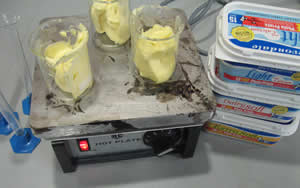
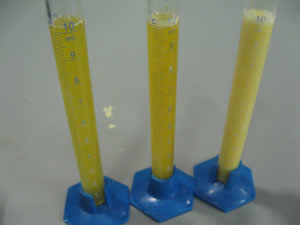
Some margarines or butters will separate into layers of fat and water as shown on the right. The fat, being less dense, will float on top of the water. This way we can measure the percent by volume of water that is present.
However, not all margraines separate as nicely as the one shown. Chemicals, known as emulsifiers, are added to help the water and oil mix together and so prevent separation. Click to see how this works.
Detergents contain molecules that can act as emulsifiers. Click to try this activity with emulsifiers.
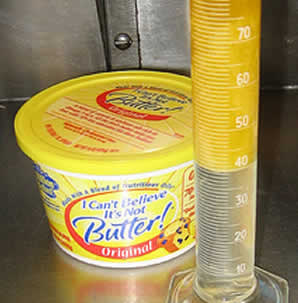

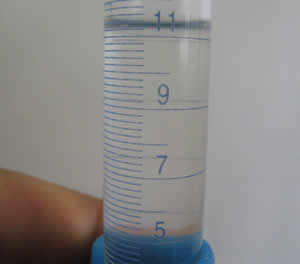
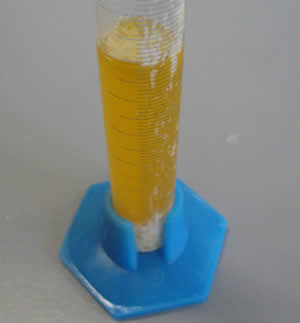
What is the percentage, by volume, of water in this margarine?
Weigh the oil and water components. What is the percentage of water by mass?
What is the price of a tub of normal margarine?
What is the price per gram?
What is the price of the same brand of light margarine?
What is the price per gram?
How can you justify the price difference?
What is an emulsifier?
Where are emulsifiers used?
Describe how emulsifiers work using the words, hydrophobic and hydrophilic.
